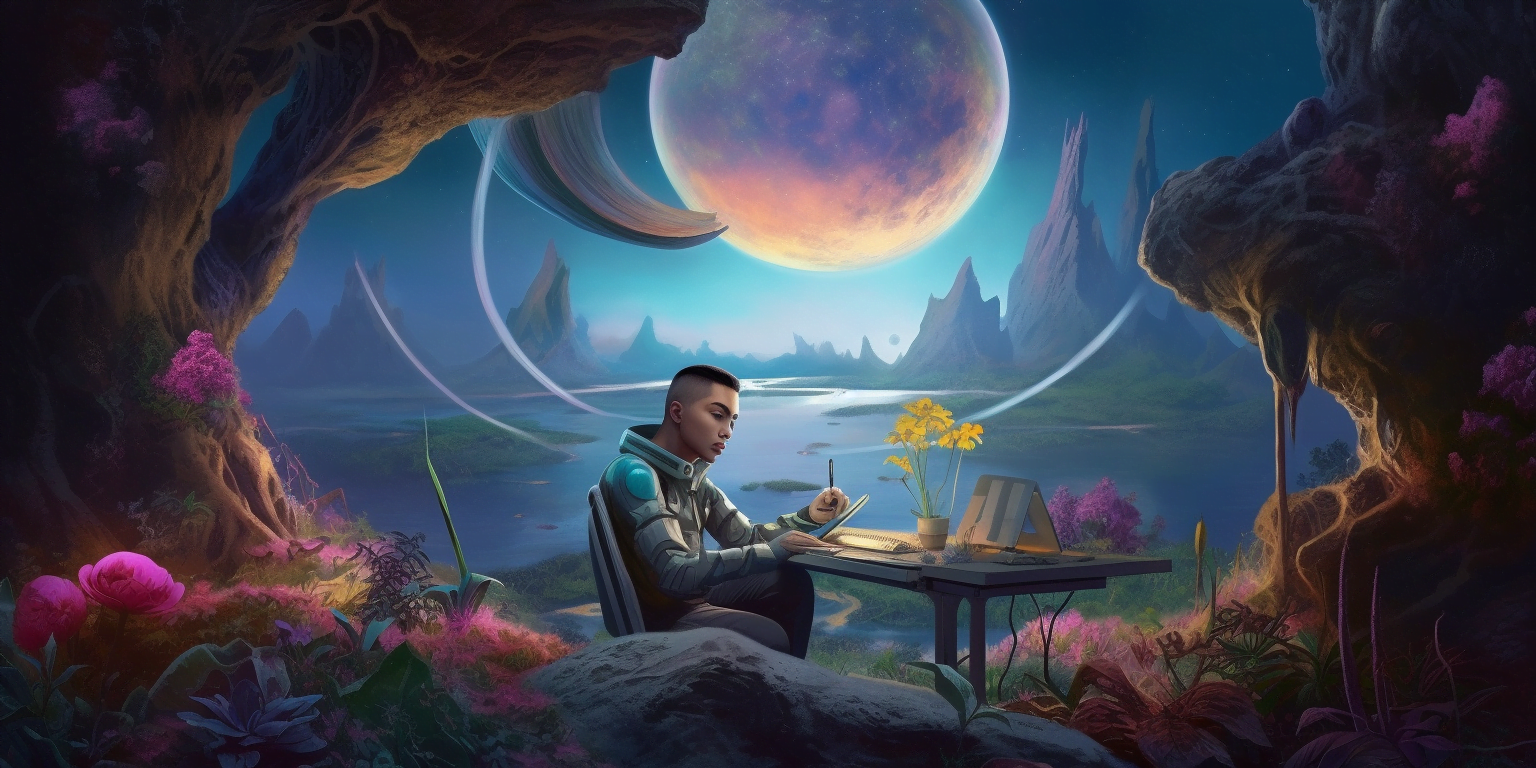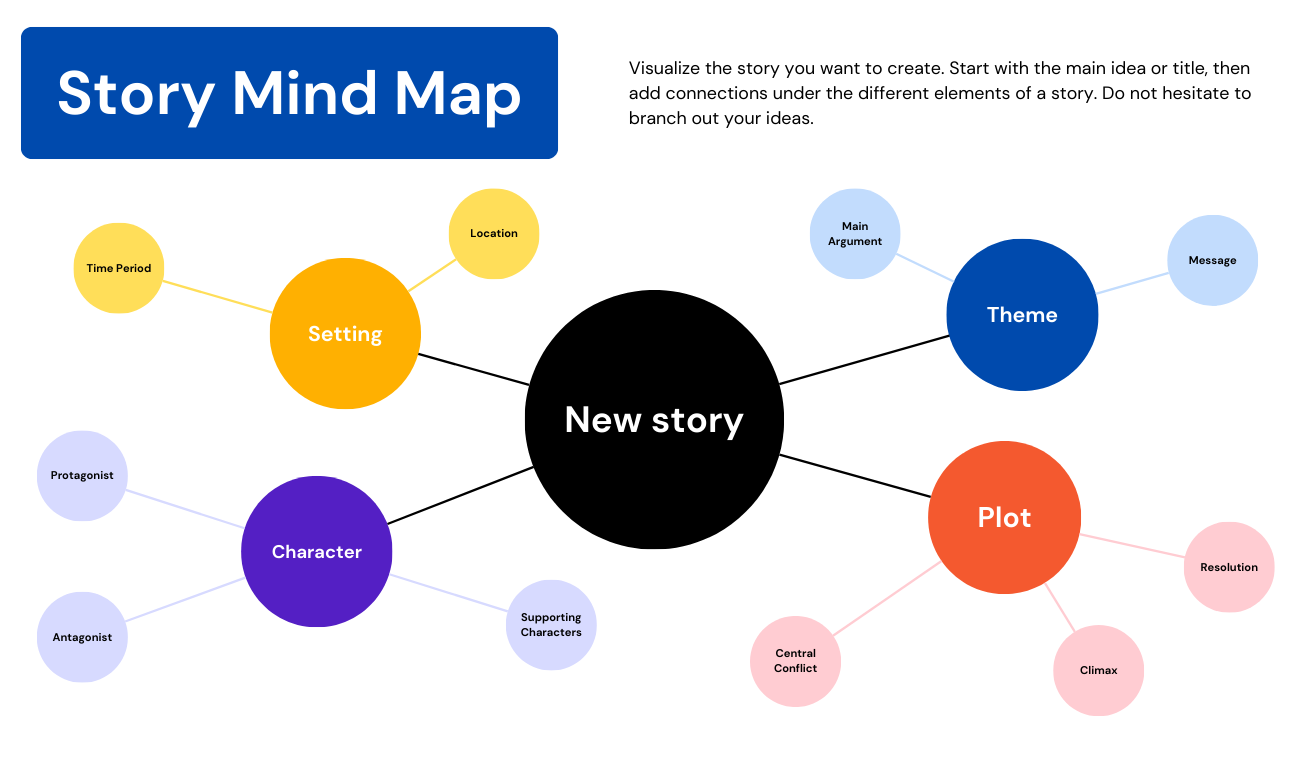
Albert Einstein once said “If you want your child to be intelligent, read them fairytales”.
In this lesson, we will focus on unleashing our imaginations and tapping into our creativity. Through fun writing prompts and exercises, we will learn how to craft engaging characters, vivid settings, and captivating plots. By the end of this lesson, you will have written your own short story and gained a deeper appreciation for the power of imagination in storytelling.
Listen to Nalo Hopkinson, an award-winning fiction author, talking about how to use language to make your story really come alive.
How to write a short story descriptively:
Learn the elements of what makes a story and go wild with your imagination!
 Set free your imagination with these adventure story ideas:
Set free your imagination with these adventure story ideas:
You find a flute in the forest. When you play it, you are transported to another world. What’s the world like?
You move into a new house and find an old board game covered in dust. You decide to play the game, and when you roll the dice, you get sucked into a different world. What’s it like there?
While cleaning your room, you discover an old dusty book. You open it, and there is a key hidden inside. What does the key open?
You go for a walk in a forest and get lost. When night falls, all the trees and plants begin to talk. What do they say? Where does this magical adventure take you?
Imagine it’s the year 3022, and your robot starts behaving strangely. You look outside, and all the other robots appear to be malfunctioning. What happens next?

Write about what your life would be like if we didn’t have access to electricity. How would we light our homes, cook our food, and power our devices?
You’re a young adventurer exploring the Amazon rainforest. Write about your journey as you encounter exotic wildlife, dangerous terrain, and mysterious ancient ruins.
You and a group of friends stumble upon a mysterious portal to another world. Write about your adventure exploring this strange new world.
You’re a young detective trying to solve a mystery in a small town. Write about your adventure as you gather clues and solve the case.
You discover a secret map that leads to a hidden treasure. Write about your journey to find the treasure and the obstacles you face along the way.
Writing Assignment: Title “Adventure Story” Writing Project
Objective: Students will develop their imagination and creativity through a writing project that allows them to create their own adventure story. The project is designed to promote independent learning, self-expression, and problem-solving.
Materials:
- A notebook or computer for writing.
- Sticky notes for the Story Map.
- A list of prompts or inspiration for adventure stories (e.g. exploring a new planet, discovering a hidden treasure, solving a mystery).
- A rubric or set of criteria for evaluating the student’s writing.
- Students can also use their essay application for creative writing.
Create a Story Map:

Brainstorming: The student will brainstorm ideas for their adventure story, using the prompts or inspiration provided. They can create a mind map, outline, or storyboard to organize their ideas and plan the plot, characters, and setting.
How to brainstorm ideas for a short story:
The Super Hero Exercise
To create a stimulating start to your brainstorming session and story mapping, gather as many pictures of super heroes as possible. Then tape them on the walls.
This exercise is about imagining the superhero of your story and the evil they are trying to rid the world of. This will reveal your all-important story purpose. For example, a character in your story might be against polluting the ocean, so they invent a new automatic submarine that helps detect plastic in the water and vacuums the waste.
Write down a list of the evils you think your story character is battling against, with one evil on each post-it note. Stick them on the wall and take a vote on the biggest evil you wish your super hero in the story to take on and defeat. This exercise helps you to understand your story purpose.
The Character’s Personality Exercise
For this exercise, collect as many pictures of animals on land, at sea, and in the air. Stick these photos on the wall and identify the animal you think best represents each character in your story.
If your character was an animal, would it be a lion, an eagle or a dog or some other type of animal? There’s something wonderfully non-threatening about comparing your character to an animal, which can reveal powerful insights.
Here are some examples to help stimulate your thoughts. Is your character:
Analytical and thoughtful like an owl?
Independent, ambitious, and strong like a lion?
Intelligent and creative like an octopus?
Playful, generous, and optimistic like an otter?
Community focused like a honey bee?
This exercise enables you to find out your character’s personality, to be able to write more imaginatively about who they are, how they look like, and how they talk.
Writing: The student will write their adventure story, using their imagination and creativity to develop the plot, characters, and setting. They can use descriptive language, dialogue, and action to engage the reader and create a sense of suspense and excitement.
Editing: The student will revise and edit their adventure story, using a rubric or set of criteria to evaluate their writing. They can revise for grammar, punctuation, spelling, and style, and edit for clarity, coherence, and consistency.
Sharing: The student can share their adventure story with a parent, teacher, or peer, and receive feedback and comments. They can discuss their writing process, challenges, and successes, and reflect on their own learning and growth.
Assessment: The student can self-assess their writing skills and creativity, based on the rubric or set of criteria provided. They can also receive feedback from a parent or teacher, who can evaluate their writing and provide constructive criticism.
Note: The project can be adjusted based on the age and developmental level of the student. Younger students may need more guidance and support in brainstorming and writing, while older students may benefit from more complex prompts and challenges. The project can also be modified to suit different learning styles, such as visual or auditory learners. The project can be completed multiple times to improve writing skills and creativity.
Submit your short story: here.
Thanks for inspiring me to turn my dreams into reality.
